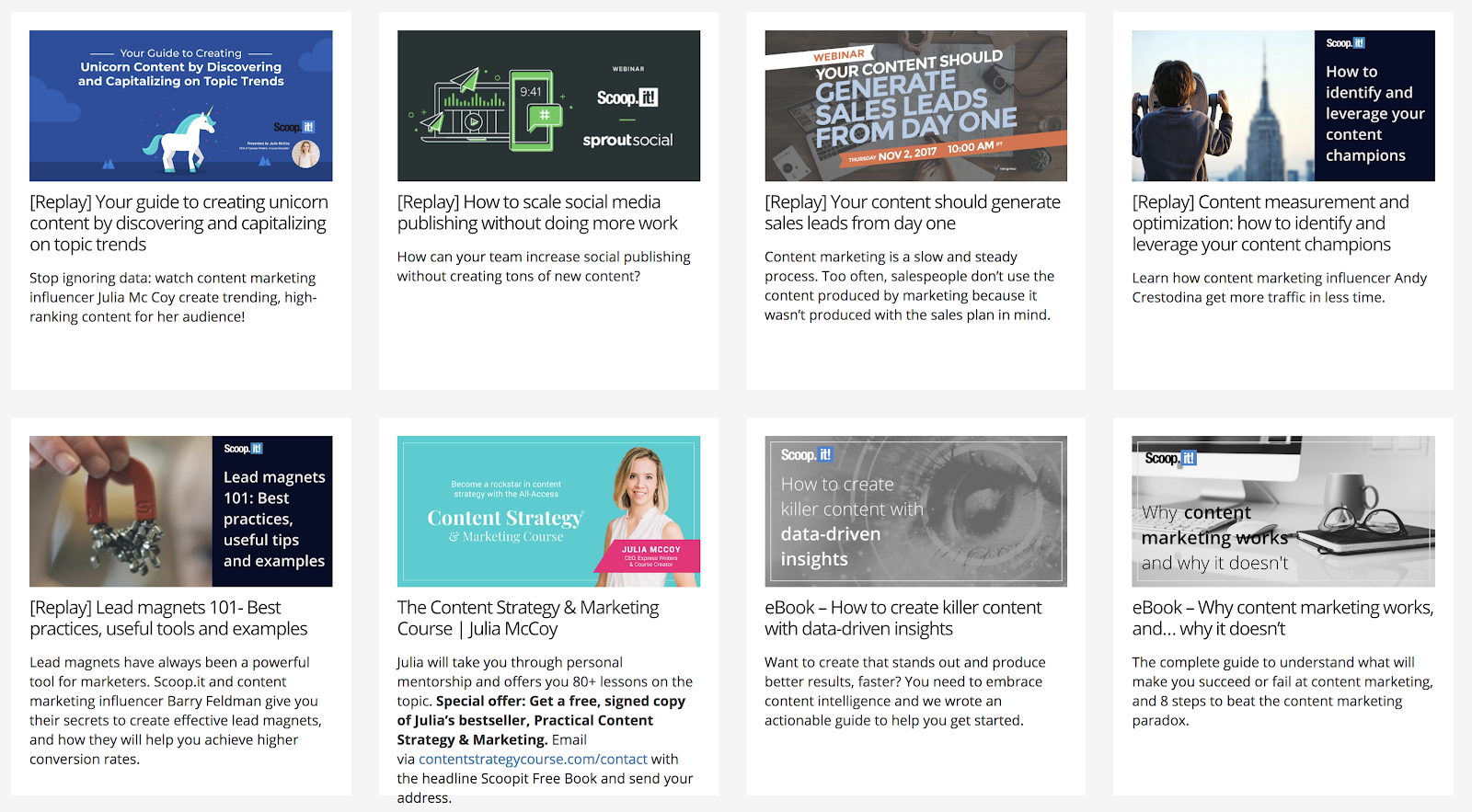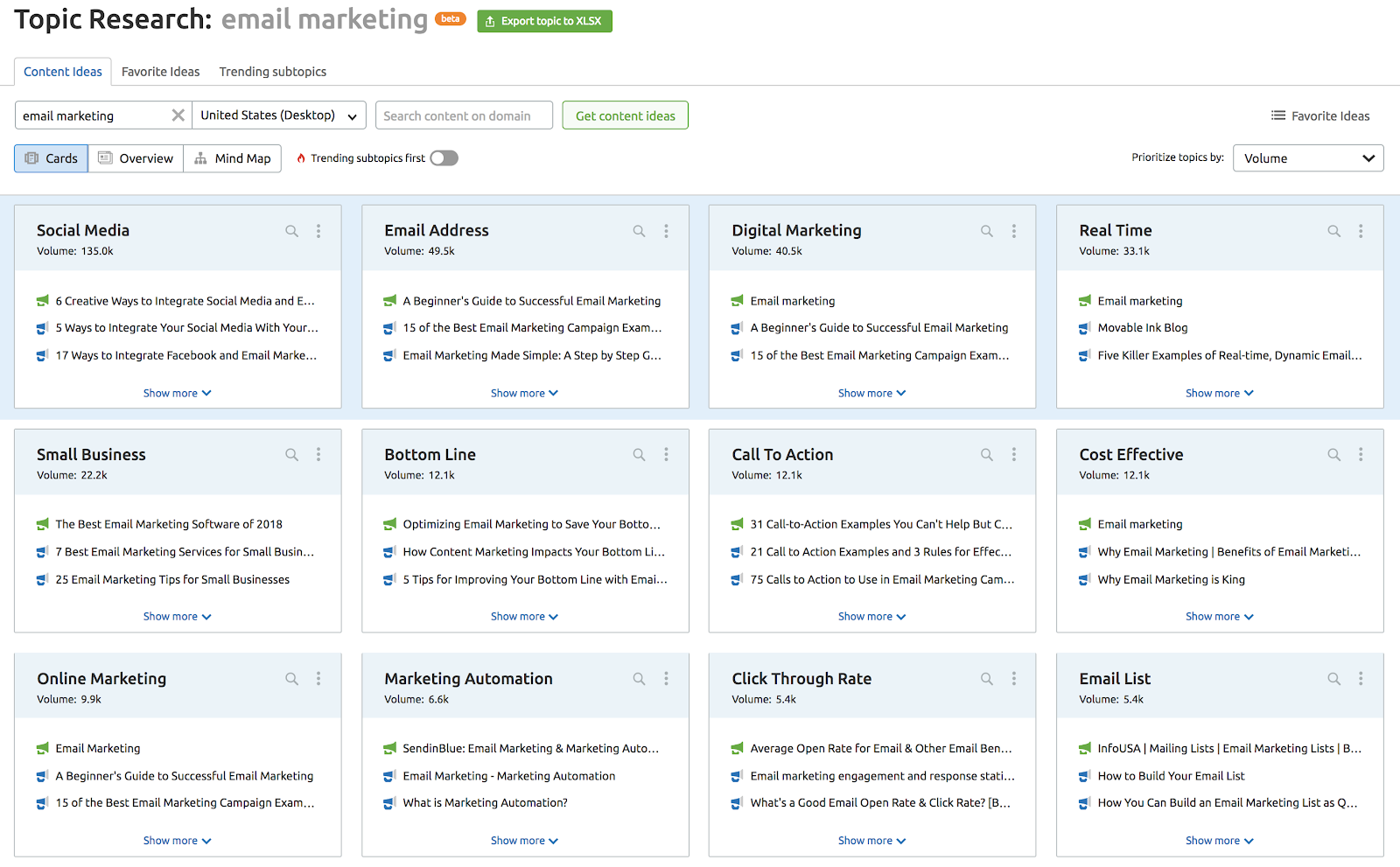
If you’re like most content marketers, you’re dealing with consistent pressures and demands of the industry. If you fail to keep up, you can’t see results. Because…
An estimated 50% of all content is going completely unused. Evergreen, high-quality content has never been more paramount to the content strategy success, and you can’t afford any time to waste on content that won’t bring you ROI.
Ranking in search to get in front of your target audience takes time. Only 22% of pages that rank in the top 10 results were created in the last year.
The need to have an omni-channel strategy is at its peak. Even though it requires more time and planning than single-channel content, businesses who adopt it achieve 91% greater year-over-year customer retention rates.
Remember: people aren’t searching for content. No one wakes up and wants to watch a webinar or read a whitepaper. Instead, they are searching for solutions and answers. If you’re the one providing answers, you can win them over and turn them into loyal, returning readers and visitors.
There is a streamlined way to achieve this: content hubs.

An example of a content hub
What is a content hub?
A content hub is an online destination that houses your content in one place. It’s a centralized, highly organized platform with lots of flexibility to present your most valuable, evergreen content and provide an interactive experience for your online audience.
Content hubs are often mistaken for standard blog pages. The key difference, however, is that your blog is essentially a content publishing channel, just like a YouTube channel or a podcast. These channels are presented chronologically and depend on an editorial calendar.
A content hub, however, provides the most relevant, highest quality content for a particular visitor. This can (and should) include your blog content, but also your:
- Videos
- Infographics
- Audio content
- Ebooks
- Whitepapers
- Webinars
- Case studies
- Social media content
- Curated content
- User-generated content
You can see this mix in this snapshot from one of our content hubs:

Content hubs can be organized and segmented for different personas, by categories, topics formats, and anything your ideal persona receives the most relevant and engaging experience.
Ultimately, they help your visitor find the information they need and in the format they want. Most importantly, content hubs make you the reliable, trustworthy source of information—even when that information lives on another channel or even on someone else’s website.
Why content hubs are worth your time as a content marketer
There are many activities you could be spending your valuable time on. Wondering why you’d add content hubs to your list?
Put shortly, content hubs centralize your expertise and make you the go-to resource for your field of expertise without adding hours of tasks to your schedule. They also help you leverage and amplify content from other brands and creators while reaping the benefits for your organization, which we’ll talk about more in the next section.
It gets even better—here are some additional benefits:
Keeping traffic to yourself. When you share your own content housed at other destinations (like YouTube), you lose a portion of the traffic that you could have directed to a more valuable asset—your website. Same goes for traffic you send to other publishers and blogs when you curate your hub. With a content hub, you’re providing the home to the best content for your visitor that they will want to return to, no matter the destination you send them to.
Ranking for competitive keywords. Reaching the first page of search results is a challenge on its own, but it’s even harder when most of your content is published recently and you’re up against publishers with years of content. Content hubs help you create clear signals for search engines thanks to highly relevant, semantically related, specific content.
Building brand loyalty through repeat visits. By consistently providing the best content you and the industry have created in your content hub, your audience will keep coming back for more. This is why it’s crucial to use your content hub to host the highest quality content possible and not just any content on the topic. If you make a positive impact with your hub, you will forge trust and strong relationships.
Centralized, controlled user experience. With a content hub, you never have to rely on algorithms, platform changes, competition, or email deliverability. You are in full control over what your visitors will see, your design, filters, order, and update frequency.
Increasing the lifetime of your content. A study showed that 72% of impressions of an average blog post happen in its first month. Consistently produced fresh content pushes the old one ‘down’, and it’s becoming more difficult to get the deserved mileage from existing pieces of content. By placing them into context in a content hub, your content can serve your audience for years to come, as long as it’s relevant.

The power of analytics. Your content hub will reveal what subtopics, formats, and approaches work best for your visitors. Numbers never lie! By regularly analyzing the performance of content within your content hub, you can optimize your long-term content strategy for success.
Impact of content curation in content hubs
If you’ve ever felt pressured to keep up with a crazy content schedule, content hubs might feel like extra work you don’t have the capacity for.
Here’s the good news: content curation will make this process exponentially easier without adding to your workload.
Not just that: it will help you become the central place for your audience for all the most valuable content in the industry instead of just yours.
You will also benefit from curated content hubs by:
Providing content formats that you otherwise cannot create frequently enough. For example, if your analytics show you that videos perform the best in your hubs, but you only produce them 2-4 times a month, you can curate other creators’ videos to supplement your own publishing schedule.
Become the resource for timely resources and reports. If there is a recently published industry research, you can curate it in your hub and surround it by contextual, highly actionable content that you created.
With the combination of owned and curated content, you will ensure you never run out of insights to share with your audience. By doing this, you will educate them with in-depth content and inspire them to take action—on your grounds.
Even better: using third-party content in your content hub will add extra credibility to your original content, especially when highly respected industry resources share and support the same ideas as you do.
How to create and organize a killer content hub
Excited yet? It’s finally time to plan your first (or next) content hub.
Step 1: Establish your content hub objectives
Just like with any other type of content, it’s important to identify what you want to achieve with your content hub in order to measure the return on your investment. Whether it’s brand awareness, lead generation, or even increasing sales, make sure your goal drives your call-to-actions, topic selection, strategy, and reporting.
Step 2: Identify your core topics
Your topic selection should depend on your current marketing focus and campaign, but always relate to your key offerings. Let’s say your service is a marketing software solution for eCommerce organizations.
Your content hubs should cover topics based on phrases and questions your audience frequently searches for. In this case, that might be paid advertising, email marketing, and conversion rate optimization.
You can see what it looks like in one of our content hubs:

Step 3: Find your keywords for subtopics
Your hub’s core topics should further branch into more in-depth, closely related subtopics. In the eCommerce example above, that might be Facebook ad campaign types, Instagram stories ads, paid search advertising, and more.
You can discover these topics in several ways.
First, remember to talk to your existing customers, your email subscribers, and any other groups of your target audience that you have access to.
Next, make sure to dig through Google results and related searches. For example, if you search for email marketing, you can find these related searches that might be your subtopics:

Once you start clicking through and get more specific, you will find even more in-depth suggestions that your target audience also looks for in Google:

Make sure to install a browser extension such as Keywords Everywhere to see these monthly search volumes.
Another option is using a dedicated tool for keyword research. Some suggestions include Google Keyword Planner, Ahrefs, Moz, and SEMrush.
Here is a snapshot from SEMrush for email marketing topic:

Step 4: Add highly relevant content (your own + curated)
Now that you have listed your core topics and their related subtopics, start adding content that matches them.
Two things to keep in mind here:
- Ensure that the content you’re adding fits the long-tail subtopics you’ve defined and genuinely answers your audience’s questions
- Make sure your content links to other related content in your hub, as well as back to the content hub itself
- Add a variety of formats, including written, audio, video, and image-driven content to make it shareable and engaging
It’s your turn
Whatever your current situation with content marketing is, content hubs are the way to go in order to streamline your content management and amplify your efforts.
Use content hubs as the way to extend the life and reach of each piece of content in the context of other hyper-relevant and practical content for your audience. Don’t forget to track and measure your actions so you can optimize them, and you will reap the benefits for a long time to come.
Want to start your content hub strategy? Get a free demo of Scoop.it Enterprise!


